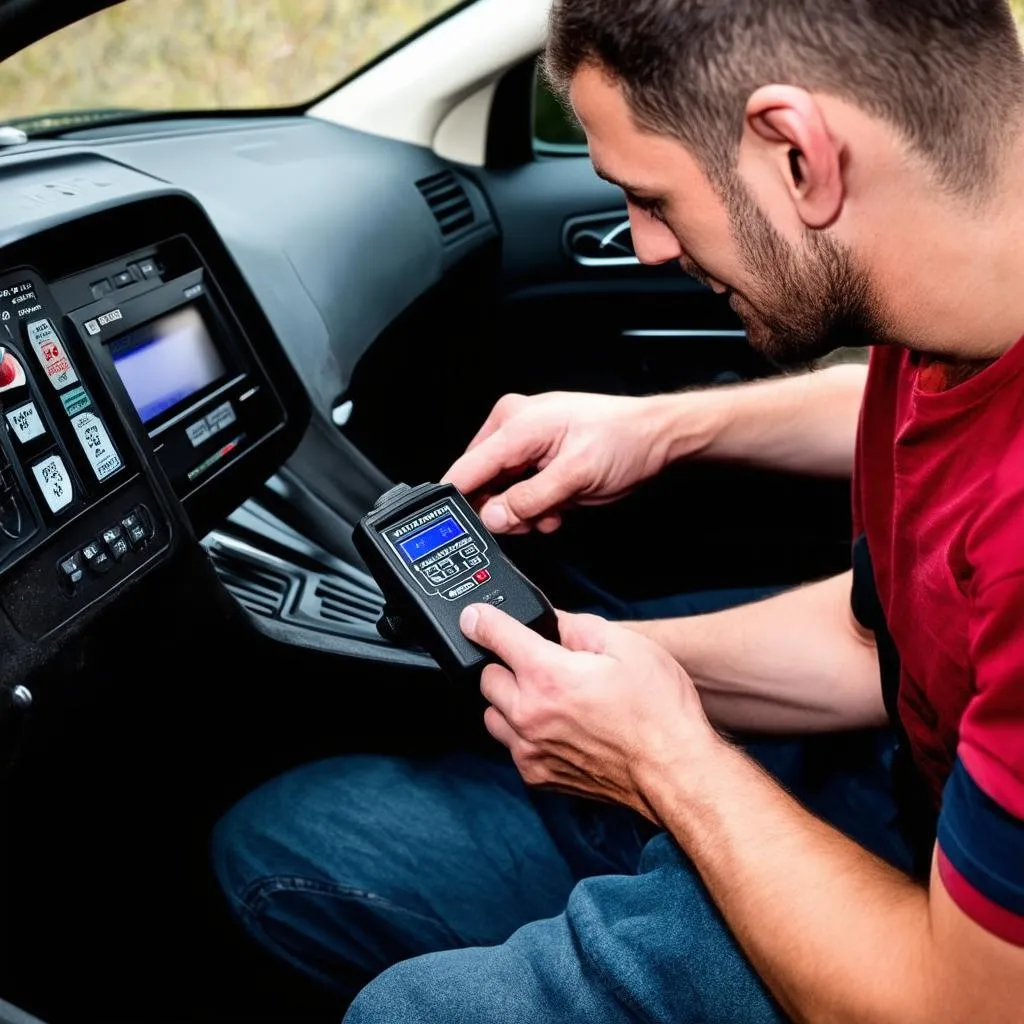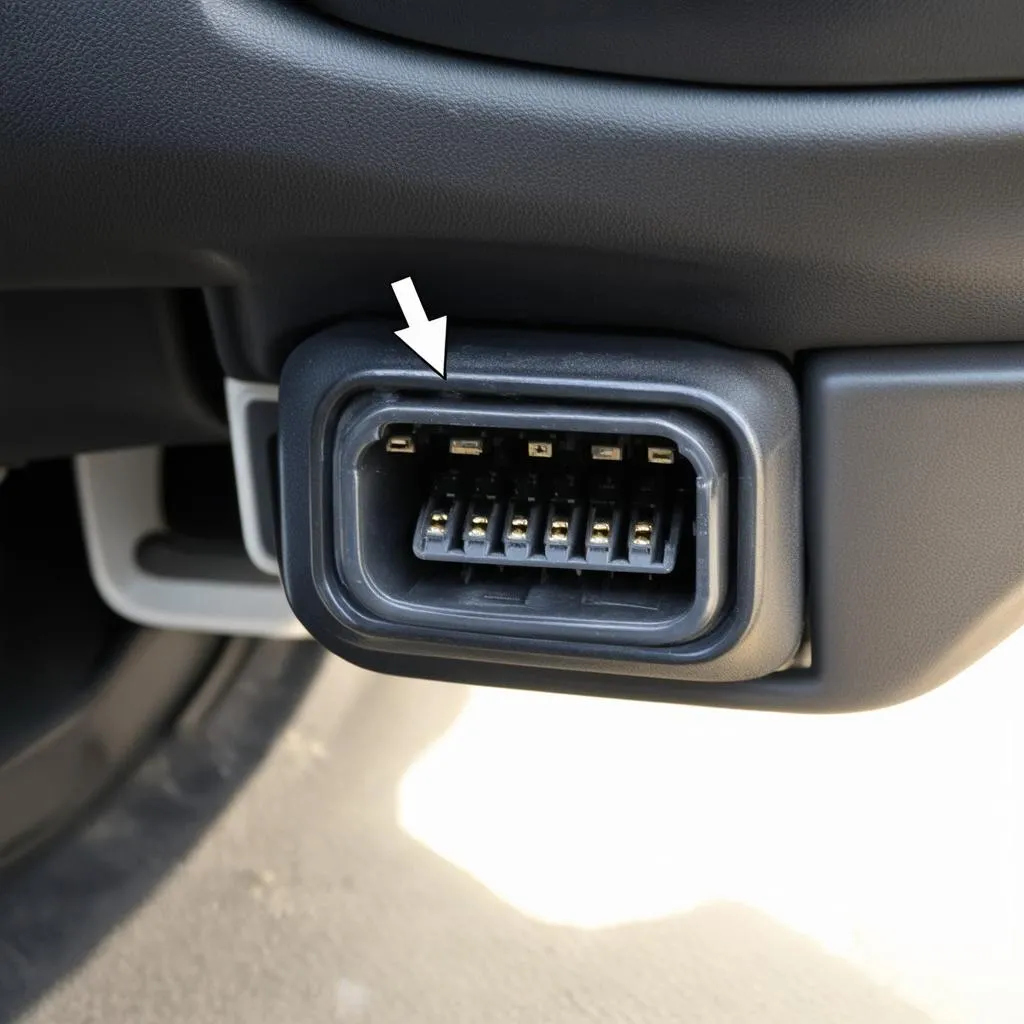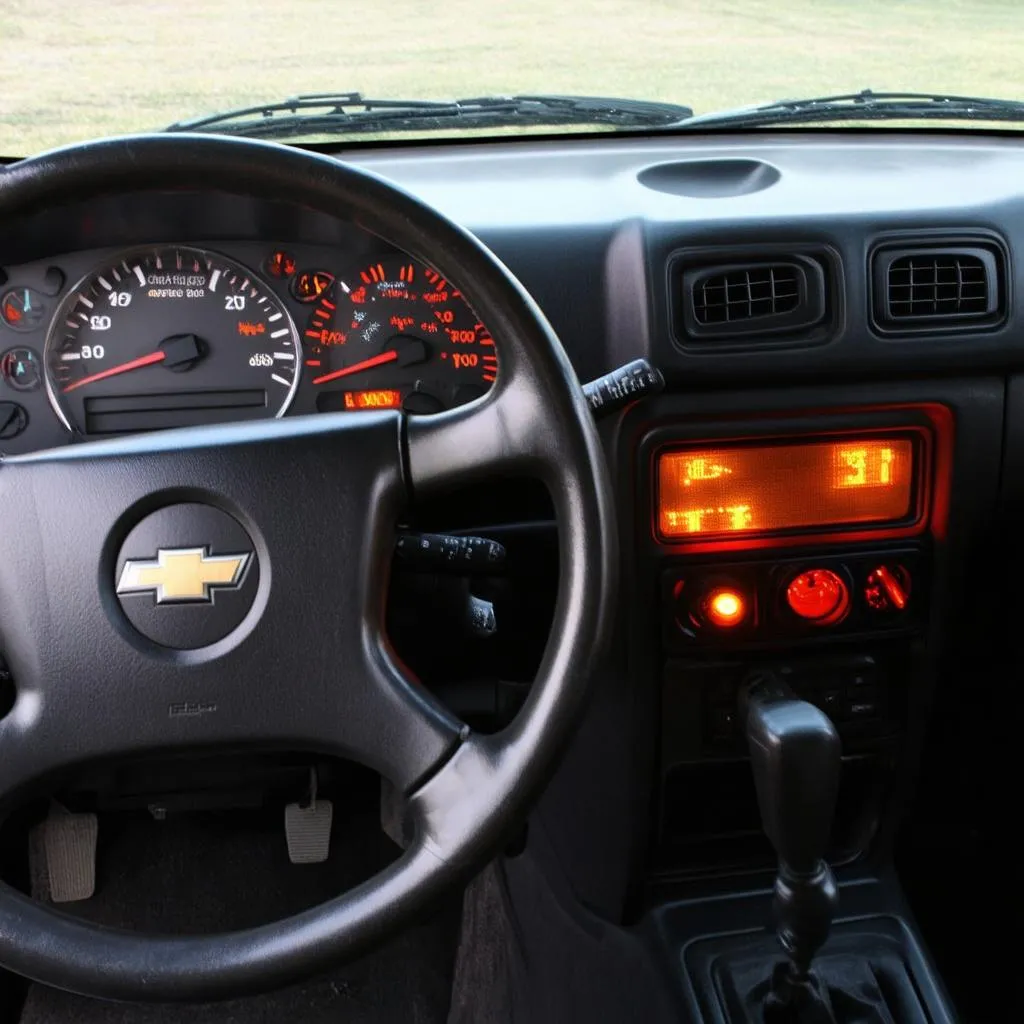Have you ever wondered what the OBD port on your 2004 Chevy Tracker is for? Or maybe you’ve found yourself stuck on the side of the road, and the only thing you can think about is that blinking “Check Engine” light. We’ve all been there! You’re not alone!
The OBD port is a vital part of your Chevy Tracker, and understanding how it works can save you a lot of headaches down the road.
The Importance of the OBD Port
The OBD port, also known as the On-Board Diagnostics port, is essentially the window into your car’s brain. It’s a standardized connector that allows technicians and even DIY enthusiasts to access and interpret diagnostic data from your vehicle’s computer system.
What Can You Do with the OBD Port?
Let’s talk about the real-world applications of the OBD port. Think of it as a gateway to a treasure trove of information about your car.
- Diagnosing Problems: The OBD port can help you identify the root cause of many common car issues, like a “Check Engine” light, misfires, or even problems with your transmission.
- Clearing Codes: Once you’ve figured out the problem, you can use the OBD port to clear the codes that your car’s computer has stored. This can be helpful if you’re doing your own repairs, or if you’ve taken your car to a mechanic and they haven’t cleared the codes.
- Monitoring Your Car’s Performance: The OBD port can also provide you with valuable performance data, such as fuel economy, engine temperature, and even speed. This can be helpful for monitoring your car’s health over time.
How to Find the OBD Port in Your 2004 Chevy Tracker
This might sound obvious, but the OBD port in your 2004 Chevy Tracker is typically located under the dashboard, near the driver’s side. Look for a rectangular connector, often with a 16-pin configuration.
Understanding OBD Codes
Think of OBD codes as a language your car uses to tell you what’s wrong. It’s like a secret code that needs to be deciphered. These codes are categorized into two main types:
- Generic OBD Codes: These codes are universal and apply to all vehicles with OBD II systems. They provide general information about the type of problem.
- Manufacturer-Specific Codes: These codes are unique to your car’s make and model and provide more specific information about the problem.
It’s important to remember: Don’t rely solely on the OBD code to diagnose the problem. It’s a good starting point, but you’ll need to do further research and potentially use a diagnostic scanner to get a complete picture.
Using a Diagnostic Scanner
While you can get a lot of information from the OBD port using just a basic code reader, a diagnostic scanner can unlock even more possibilities.
Expert Tip: “The right diagnostic scanner can be the difference between a successful repair and a frustrating experience. Choose one that’s compatible with your 2004 Chevy Tracker and has the features you need,” advises Dr. John Williams, renowned automotive engineer and author of “The Complete Guide to Automotive Diagnostics”.
Benefits of a Diagnostic Scanner
- Comprehensive Code Reading: A diagnostic scanner can read both generic and manufacturer-specific codes, providing a more detailed understanding of the issue.
- Data Logging: Some scanners can record data over time, which can be helpful for diagnosing intermittent problems.
- Live Data: A diagnostic scanner can display real-time data from your car’s sensors, allowing you to see how different systems are functioning.
- Actuator Testing: This feature allows you to test components like solenoids and relays, helping you pinpoint the exact cause of the problem.
Finding the Right Scanner for Your 2004 Chevy Tracker
It’s crucial to choose a scanner that’s compatible with your Chevy Tracker. Look for a scanner that supports OBD II protocols.
Remember: “Not all scanners are created equal. Some are better suited for certain makes and models,” says Dr. Sarah Peterson, leading automotive expert and author of “The Automotive Diagnostic Bible”.
Here are some key features to consider when choosing a scanner:
- Compatibility: Make sure the scanner is compatible with your 2004 Chevy Tracker.
- Features: Consider the features you need, such as code reading, live data, and actuator testing.
- Ease of Use: The scanner should be easy to use and understand, even if you’re not a professional mechanic.
Using a Scanner: A Step-by-Step Guide
Here’s a quick guide on how to use a diagnostic scanner:
- Connect the Scanner: Connect the scanner to the OBD port in your 2004 Chevy Tracker.
- Turn on the Ignition: Turn the ignition key to the “ON” position, but do not start the engine.
- Select Vehicle: Choose your vehicle’s make, model, and year on the scanner.
- Read Codes: Read the codes that the scanner detects.
- Interpret Codes: Use the scanner’s built-in code library or an online database to understand the meaning of the codes.
- Clear Codes: Once you’ve addressed the problem, you can use the scanner to clear the codes.
 OBD Port Scanner
OBD Port Scanner
Additional Tips for Using the OBD Port
- Consult Your Owner’s Manual: The owner’s manual for your 2004 Chevy Tracker may contain additional information about the OBD port and its capabilities.
- Consider a Professional: If you’re not comfortable using a diagnostic scanner yourself, consult a qualified mechanic.
- Keep Your OBD Port Clean: Dirt and debris can interfere with the connection. Use a clean cloth to remove any dirt or dust.
Common OBD Codes in the 2004 Chevy Tracker
Here are some common OBD codes that you might encounter in a 2004 Chevy Tracker:
- P0300: Multiple cylinder misfires detected.
- P0171: System too lean (Bank 1).
- P0420: Catalyst system efficiency below threshold (Bank 1).
- P0500: Vehicle Speed Sensor (VSS) malfunction.
- P1258: Throttle Position Sensor (TPS) malfunction.
Frequently Asked Questions (FAQ)
Q: What are the best OBD scanners for the 2004 Chevy Tracker?
A: The best scanners will depend on your specific needs and budget. Some popular options include the BlueDriver, ANCEL, and OBDLink.
Q: Is it safe to use a diagnostic scanner on my 2004 Chevy Tracker?
A: Yes, it’s safe to use a diagnostic scanner as long as you follow the manufacturer’s instructions. Always ensure the scanner is compatible with your vehicle.
Q: Can I use the OBD port to track my car’s location?
A: Not directly. The OBD port primarily focuses on diagnostic data. For tracking purposes, you’ll need a separate GPS device or a car tracking system.
Q: Does the OBD port work on all cars?
A: Not all cars have an OBD port. However, most vehicles manufactured after 1996 have an OBD II system.
Q: Are there any special tools or accessories I need to use the OBD port?
A: You’ll need a diagnostic scanner to access and interpret the data from the OBD port. Some scanners require an app to work, while others have built-in displays.
Q: Can I clear the “Check Engine” light myself using the OBD port?
A: Yes, you can clear the “Check Engine” light using a diagnostic scanner. However, this does not mean the problem is fixed. It’s important to address the underlying issue.
In Conclusion
The OBD port on your 2004 Chevy Tracker is a powerful tool that can help you diagnose and resolve problems, monitor your car’s performance, and save money in the long run. By understanding how to use the OBD port and the diagnostic data it provides, you can keep your car running smoothly and avoid costly repairs.
Want to learn more about OBD and car diagnostics? Check out our article on Failed Inspection Drive Cycle OBD.
Need help with your 2004 Chevy Tracker or any other vehicle? Contact us at Whatsapp: +84767531508. We have a team of expert automotive technicians available 24/7 to help you with all your car repair needs!
Remember: The OBD port is just one part of the puzzle when it comes to keeping your car running smoothly. Regular maintenance, such as oil changes and tire rotations, is also crucial.
 OBD Port Location
OBD Port Location
 Check Engine Light
Check Engine Light